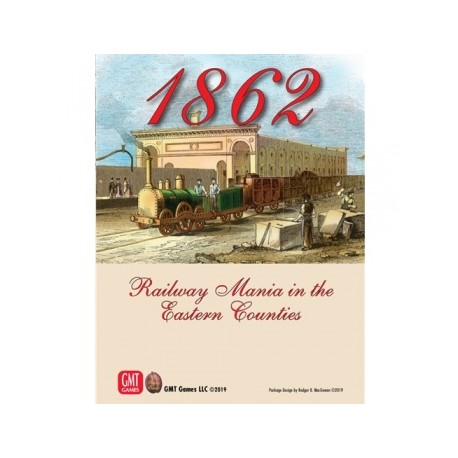Warenkorb 0 Artikel Artikel (Leer)
Keine Artikel
noch festzulegen Versand
0,00 € MwSt.
0,00 € Gesamt
Preise inkl. MwSt.
Artikel wurde in den Korb gelegt
Menge
Gesamt
Sie haben 0 Artikel in Ihrem Warenkorb. Es gibt 1 Artikel in Ihrem Warenkorb.
Gesamt Artikel (inkl. MwSt.)
Versandkosten (inkl. MwSt.) noch festzulegen
MwSt. 0,00 €
Gesamt (inkl. MwSt.)
 Vergrößern
Vergrößern 1862: Railway Mania in the Eastern Counties - EN
DLGAI114725
Neuer Artikel
1862: Railway Mania in the Eastern Counties is set in this cauldron of railway construction. Players will vie to start railway companies, invest money in railway shares, and attempt to run the railways they control for personal gain, trying to keep them afloat in changeable economic times. Each game played will be unique. Out of 20 available railway companies, only 16 will be randomly selected for each game ? and only eight will be available at start. Each company also starts with a randomly chosen Permit to run one of three different types of train. Players then begin the game by investing in some of the available companies. Each company will generate revenue for the majority shareholder by laying track on the board, placing station markers, running any trains it owns, paying dividends or retaining revenue from those trains, and then buying more and more advanced trains. As the game progresses, players can start more companies and can merge companies they control with other companies. When larger and more powerful trains are bought, older trains become obsolete and disappear, causing financial crisis for the unprepared. The game ends after the last band of trains is bought, and the wealthiest player, including shares, but not money in companies, is the winner. COMPONENTS Game board showing East Anglia Rule booklet Solitaire rules 34 Train cards 8 Phase cards and 2 Train Manifest cards 160 Company Certificates 8 sheets of Track Tiles 2 (identical) Player Aids £15,000 in Paper Money 4 sheets of tokens
derzeit nicht lagernd, wird nachbestellt
- Eigene Bewertung verfassen
Mehr Infos
1862: Railway Mania in the Eastern Counties is set in this cauldron of railway construction. Players will vie to start railway companies, invest money in railway shares, and attempt to run the railways they control for personal gain, trying to keep them afloat in changeable economic times. Each game played will be unique. Out of 20 available railway companies, only 16 will be randomly selected for each game ? and only eight will be available at start. Each company also starts with a randomly chosen Permit to run one of three different types of train. Players then begin the game by investing in some of the available companies. Each company will generate revenue for the majority shareholder by laying track on the board, placing station markers, running any trains it owns, paying dividends or retaining revenue from those trains, and then buying more and more advanced trains. As the game progresses, players can start more companies and can merge companies they control with other companies. When larger and more powerful trains are bought, older trains become obsolete and disappear, causing financial crisis for the unprepared. The game ends after the last band of trains is bought, and the wealthiest player, including shares, but not money in companies, is the winner. COMPONENTS Game board showing East Anglia Rule booklet Solitaire rules 34 Train cards 8 Phase cards and 2 Train Manifest cards 160 Company Certificates 8 sheets of Track Tiles 2 (identical) Player Aids £15,000 in Paper Money 4 sheets of tokens



